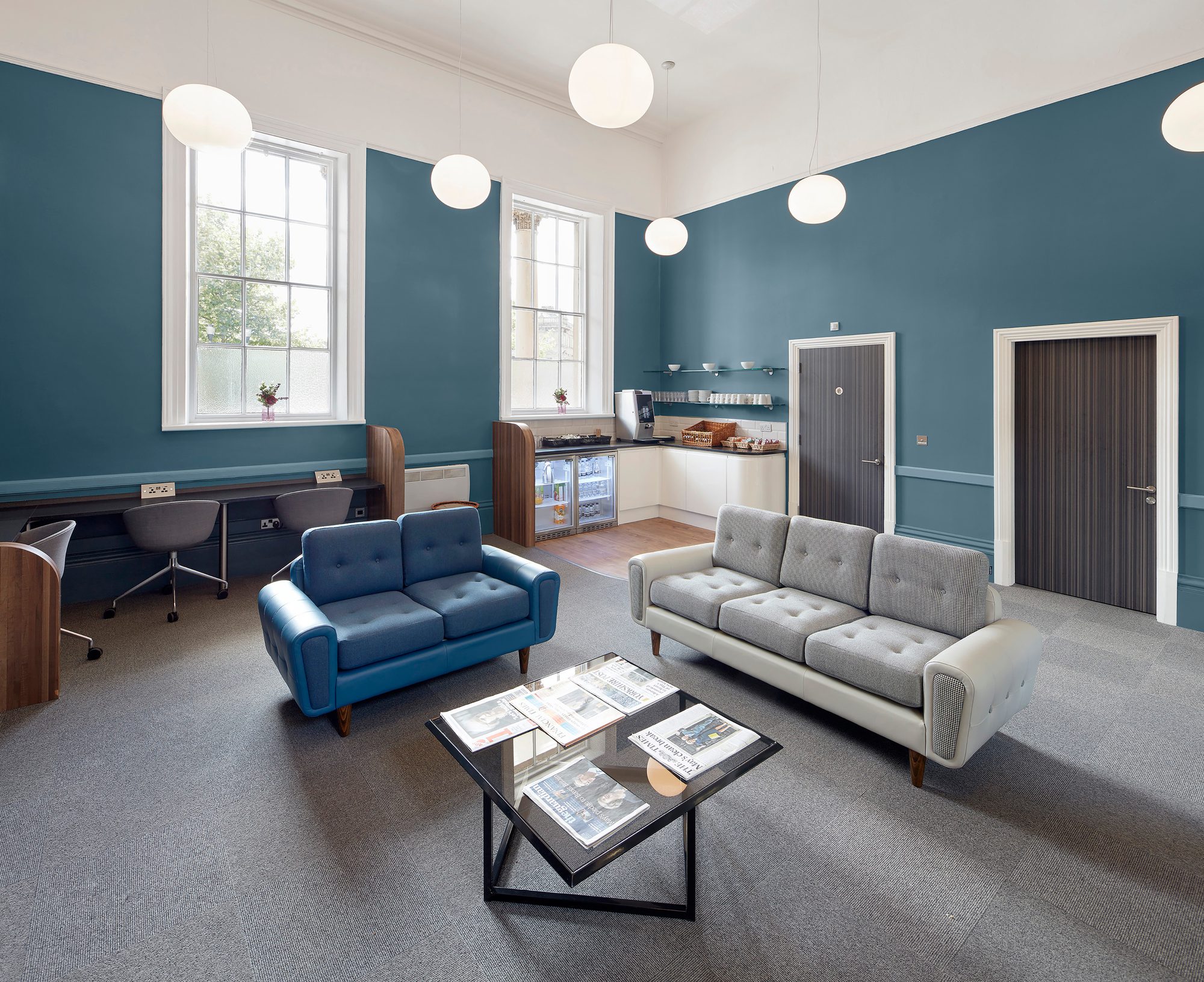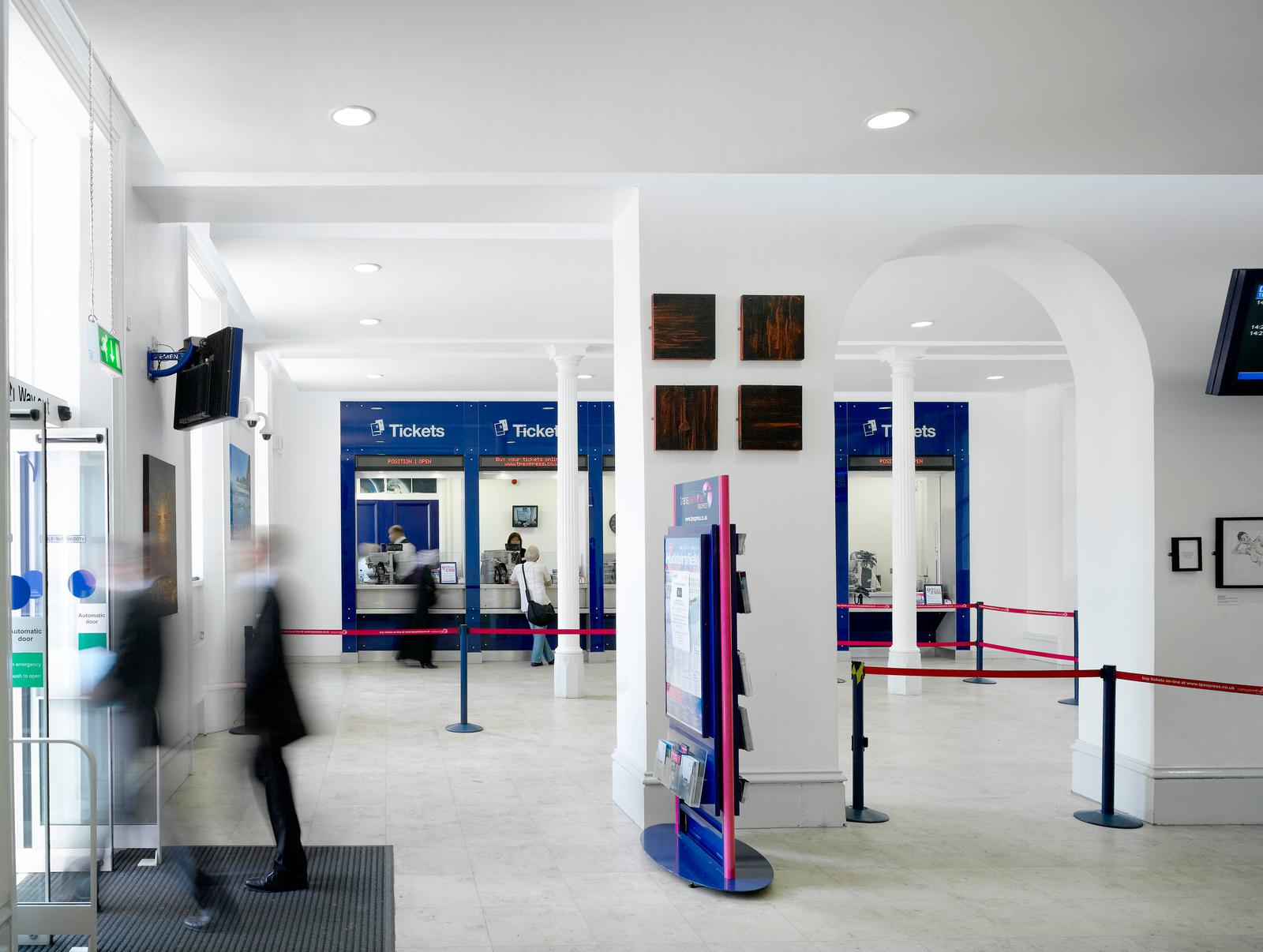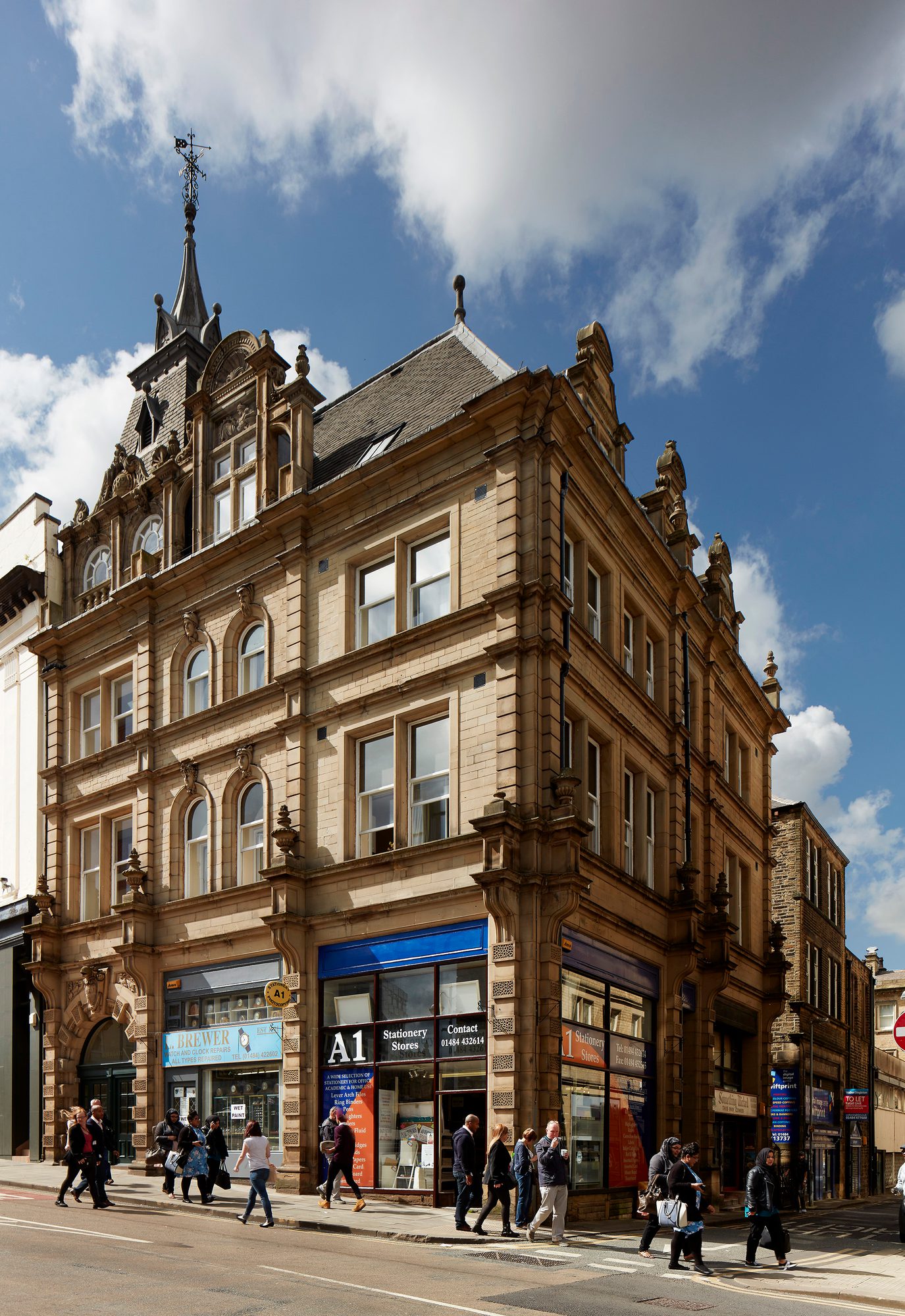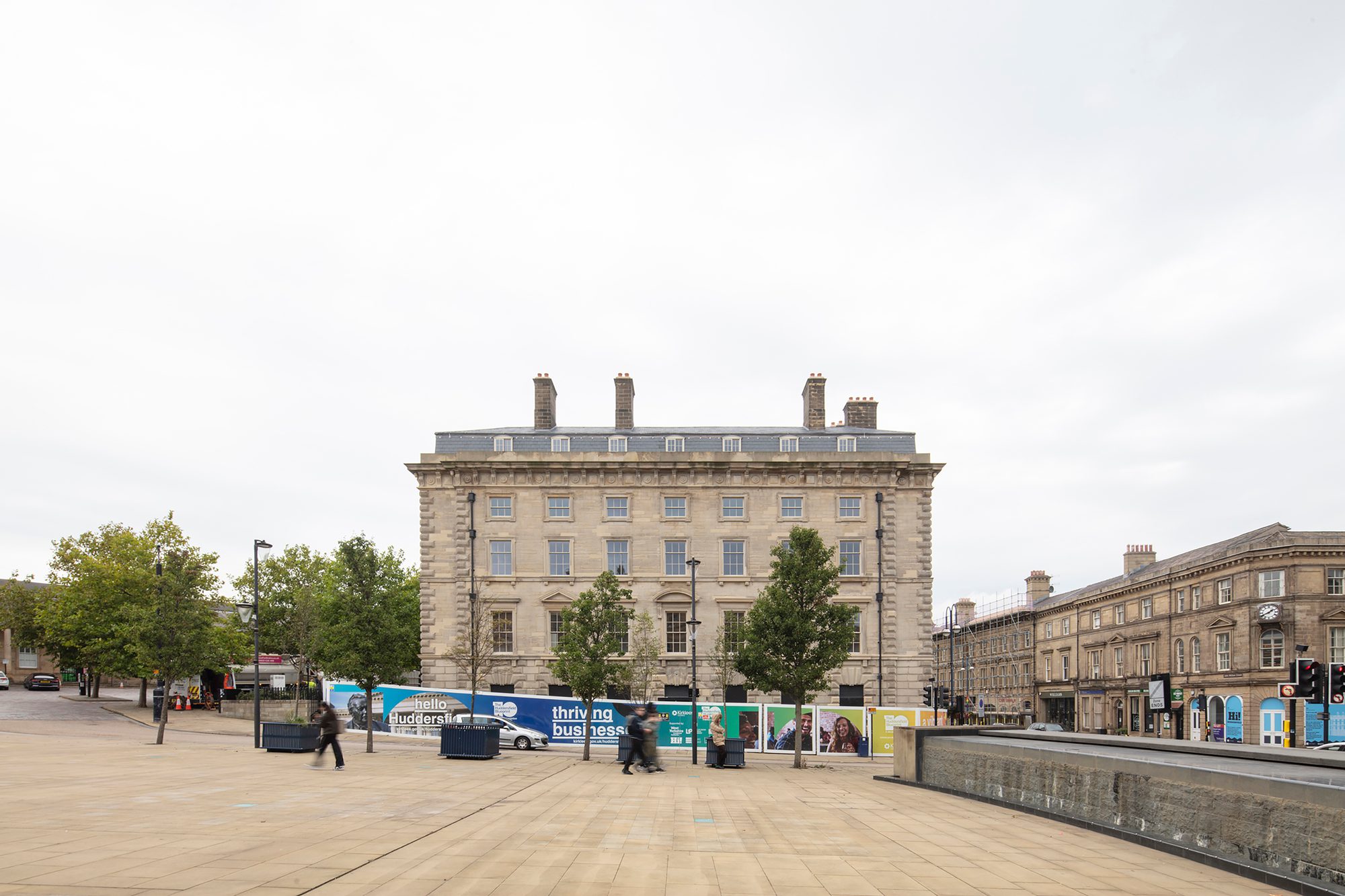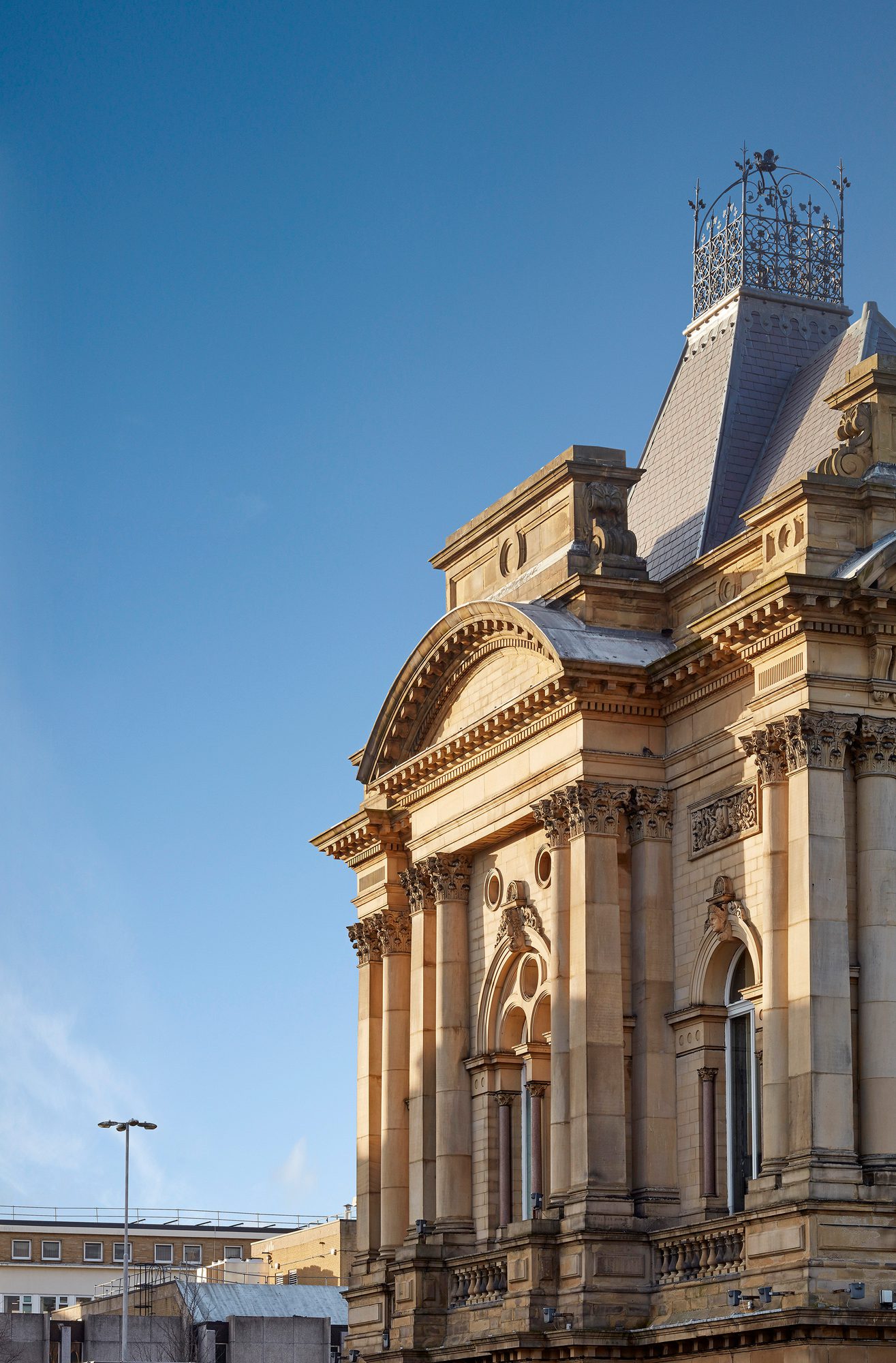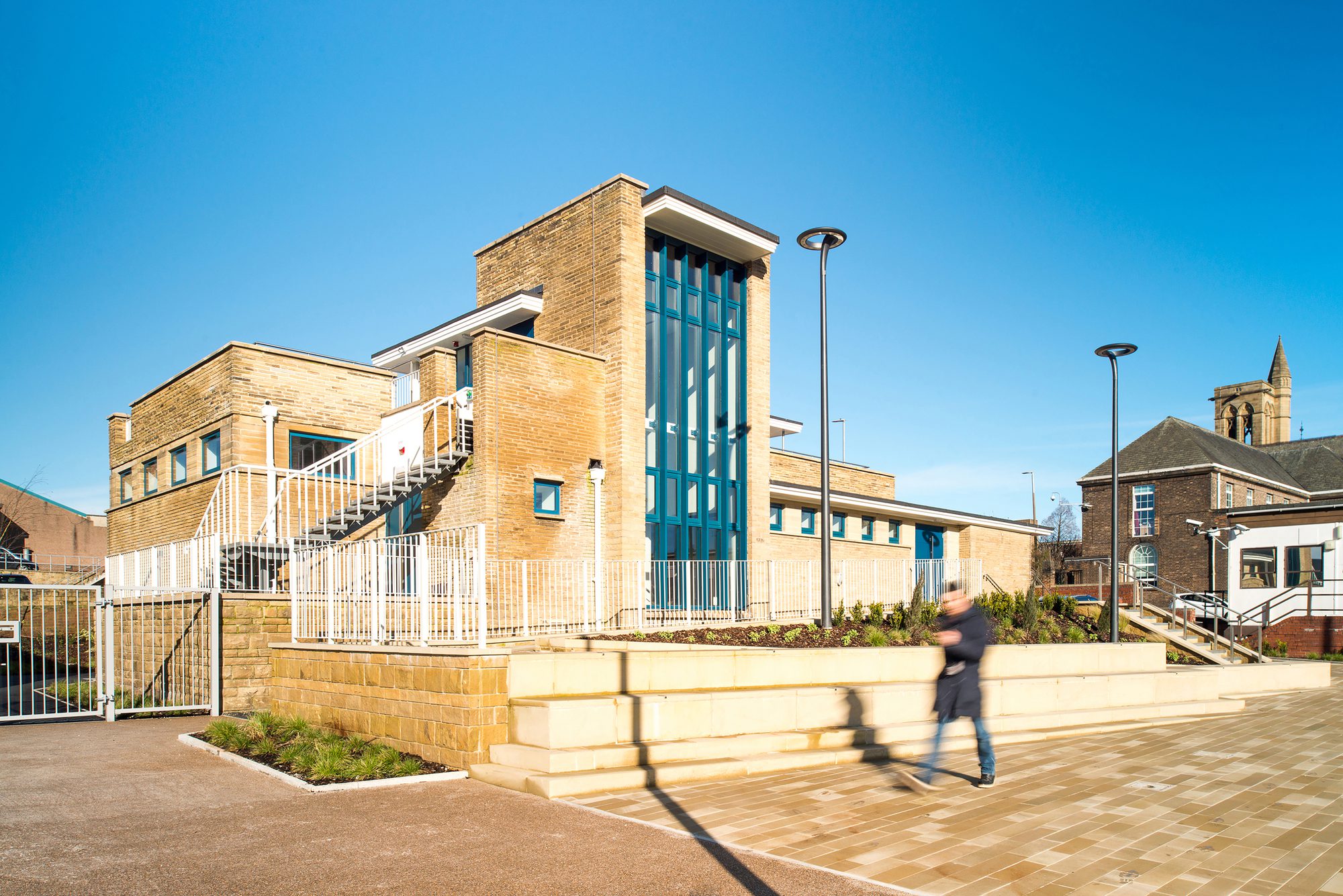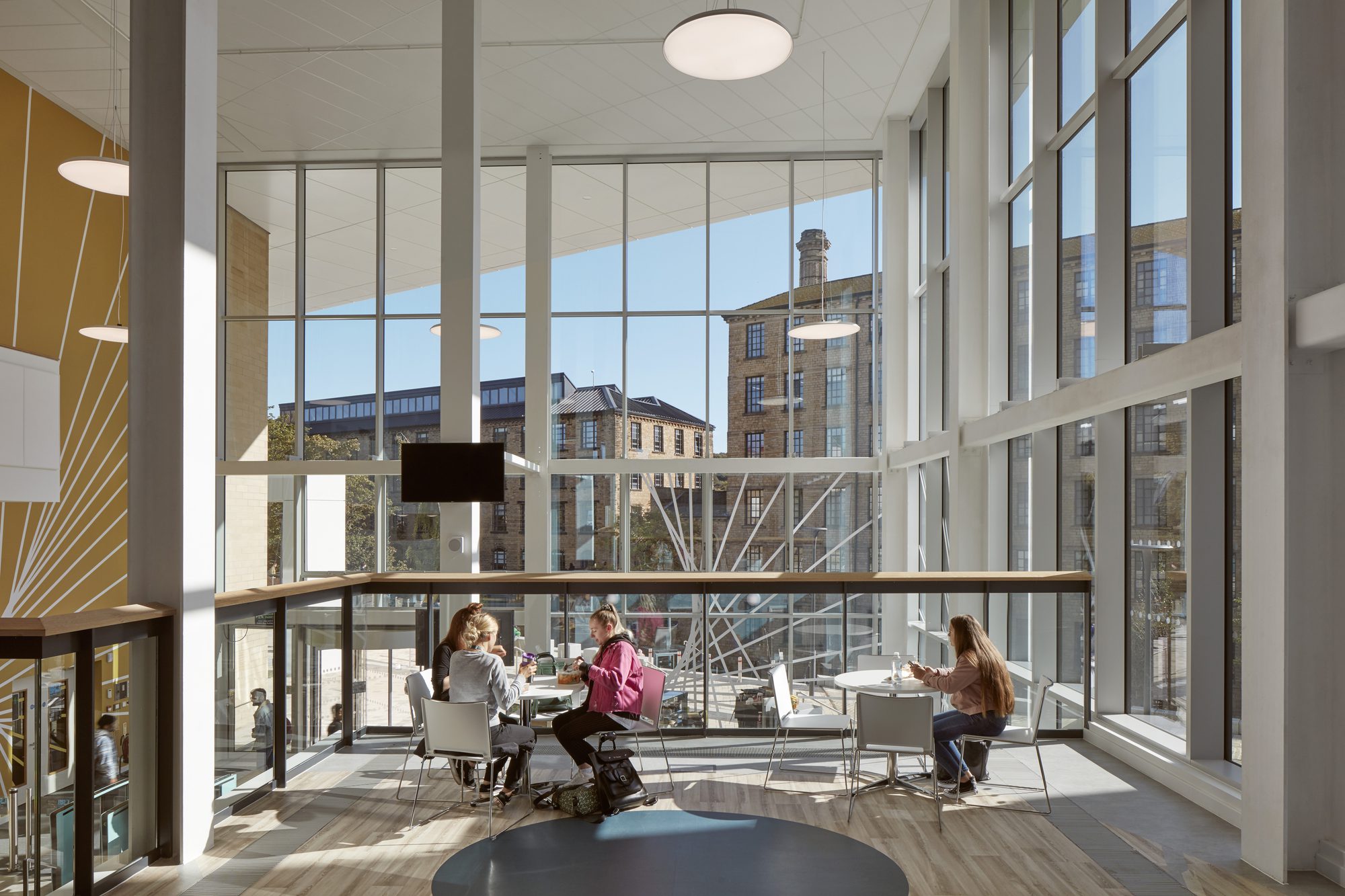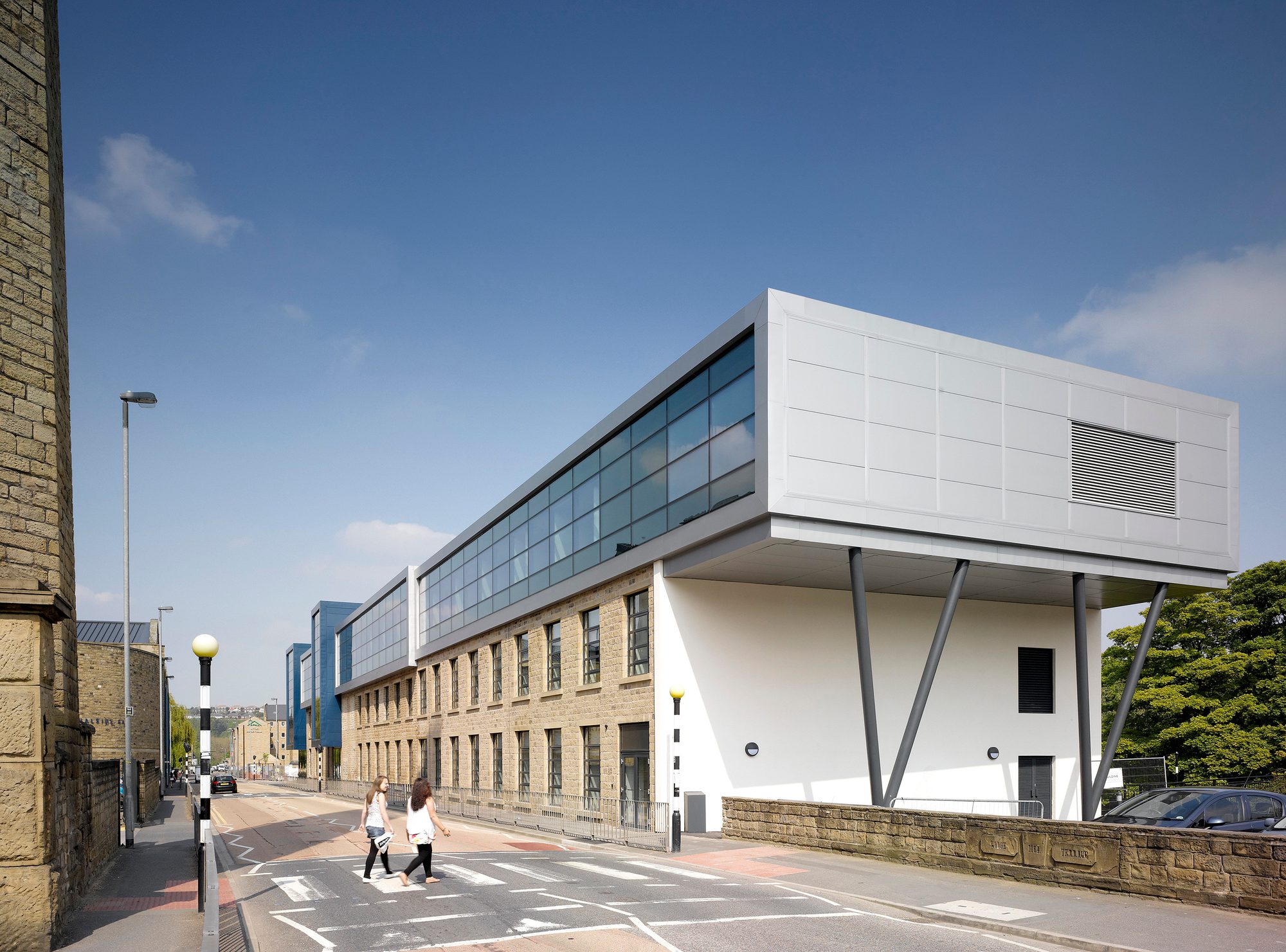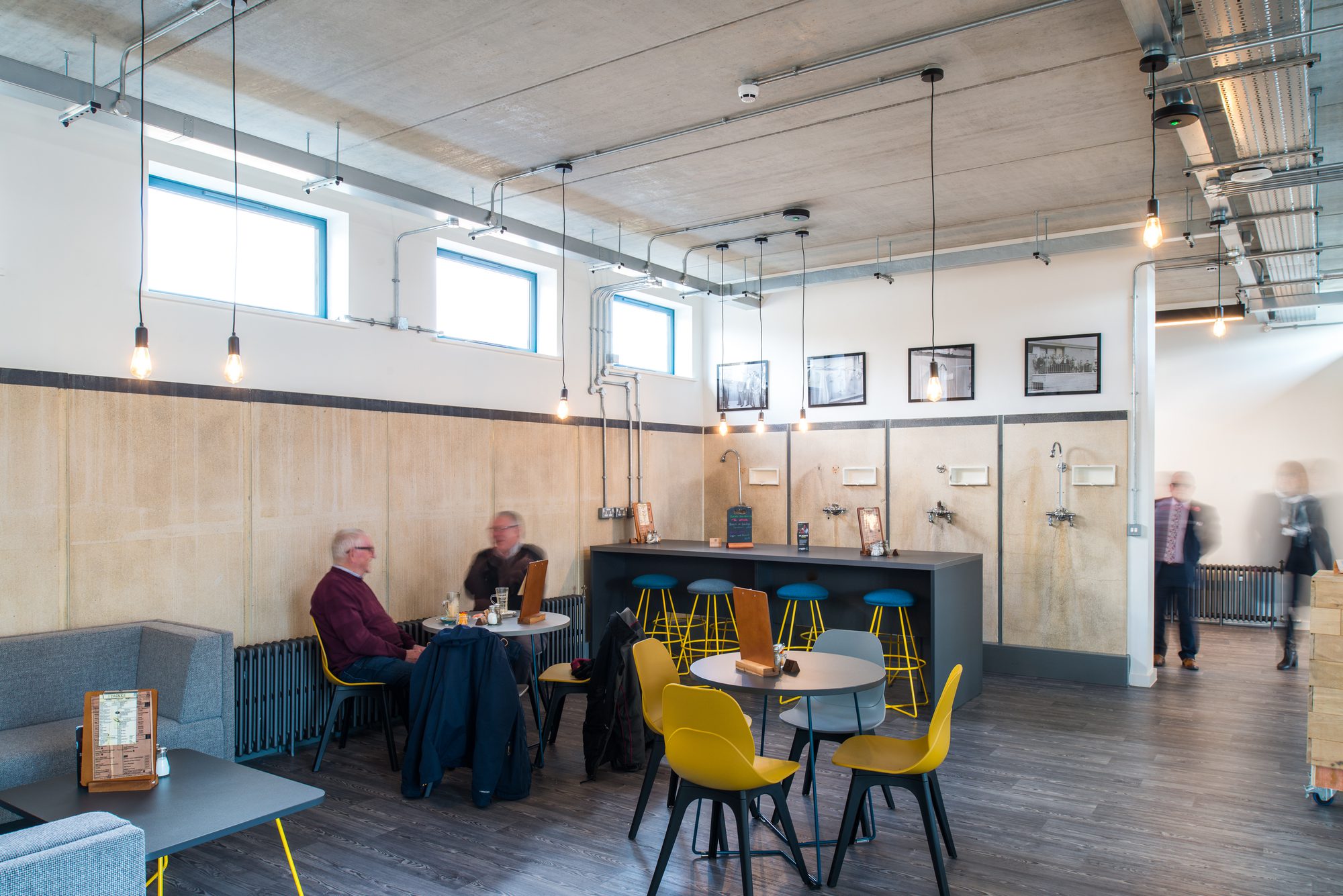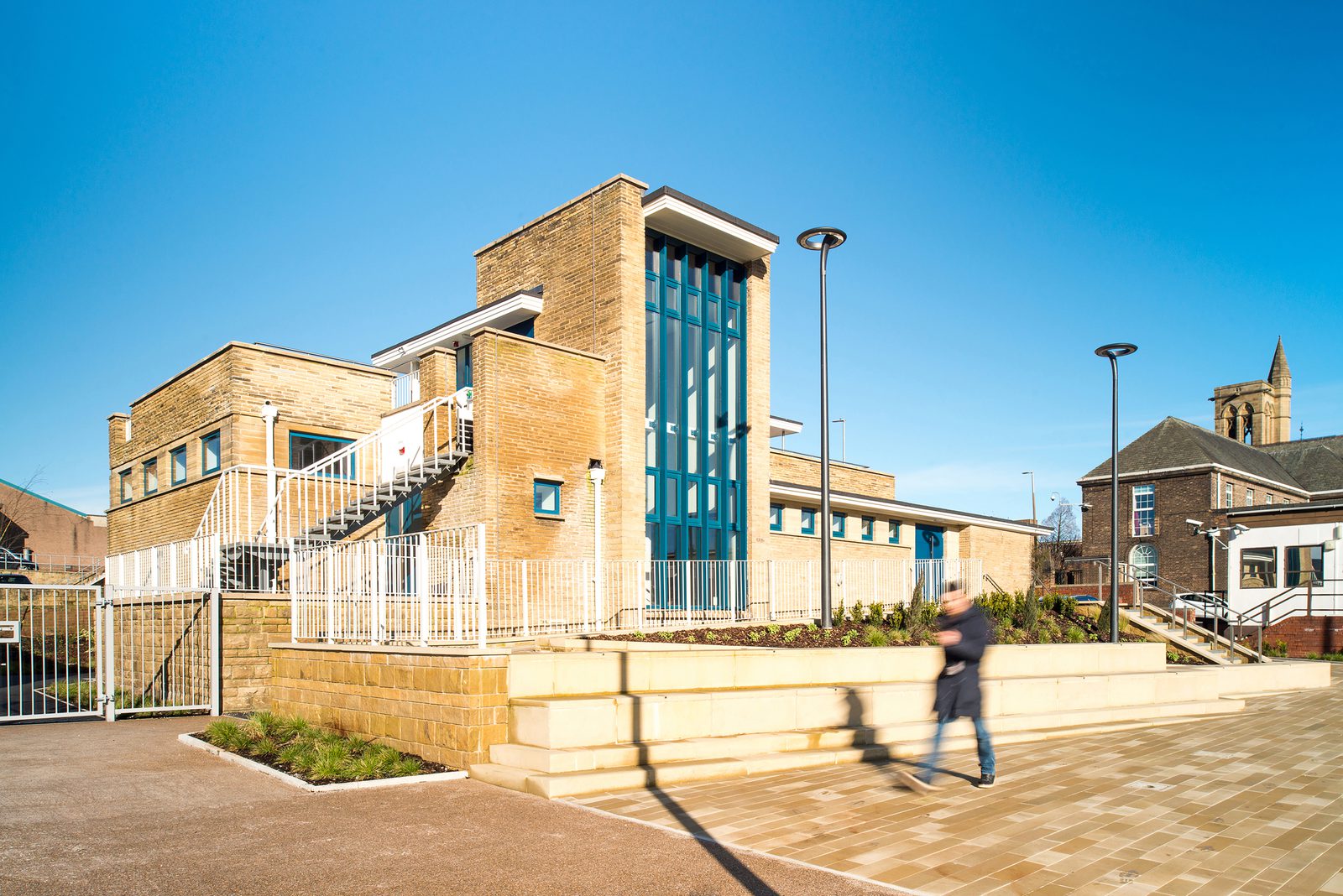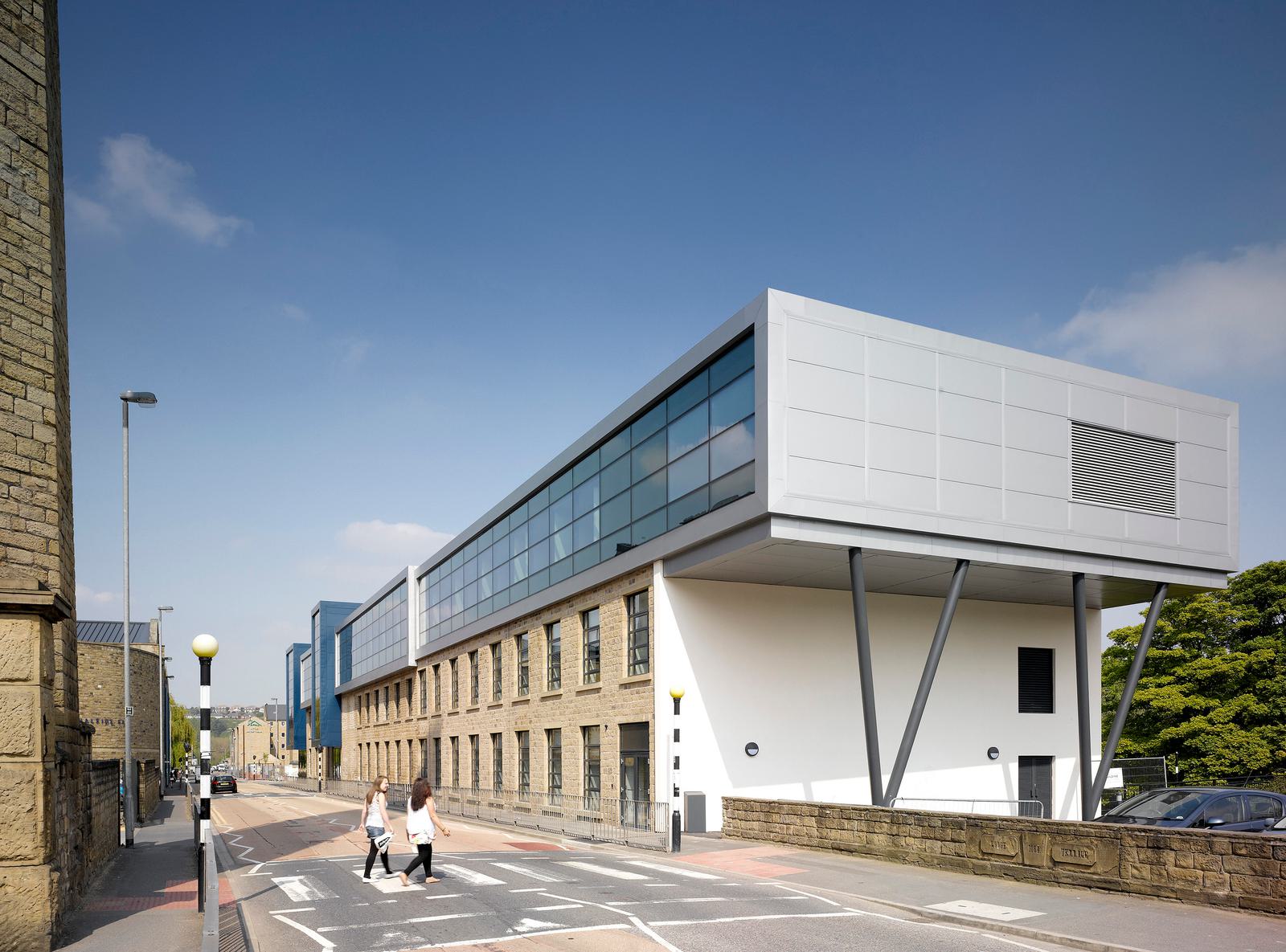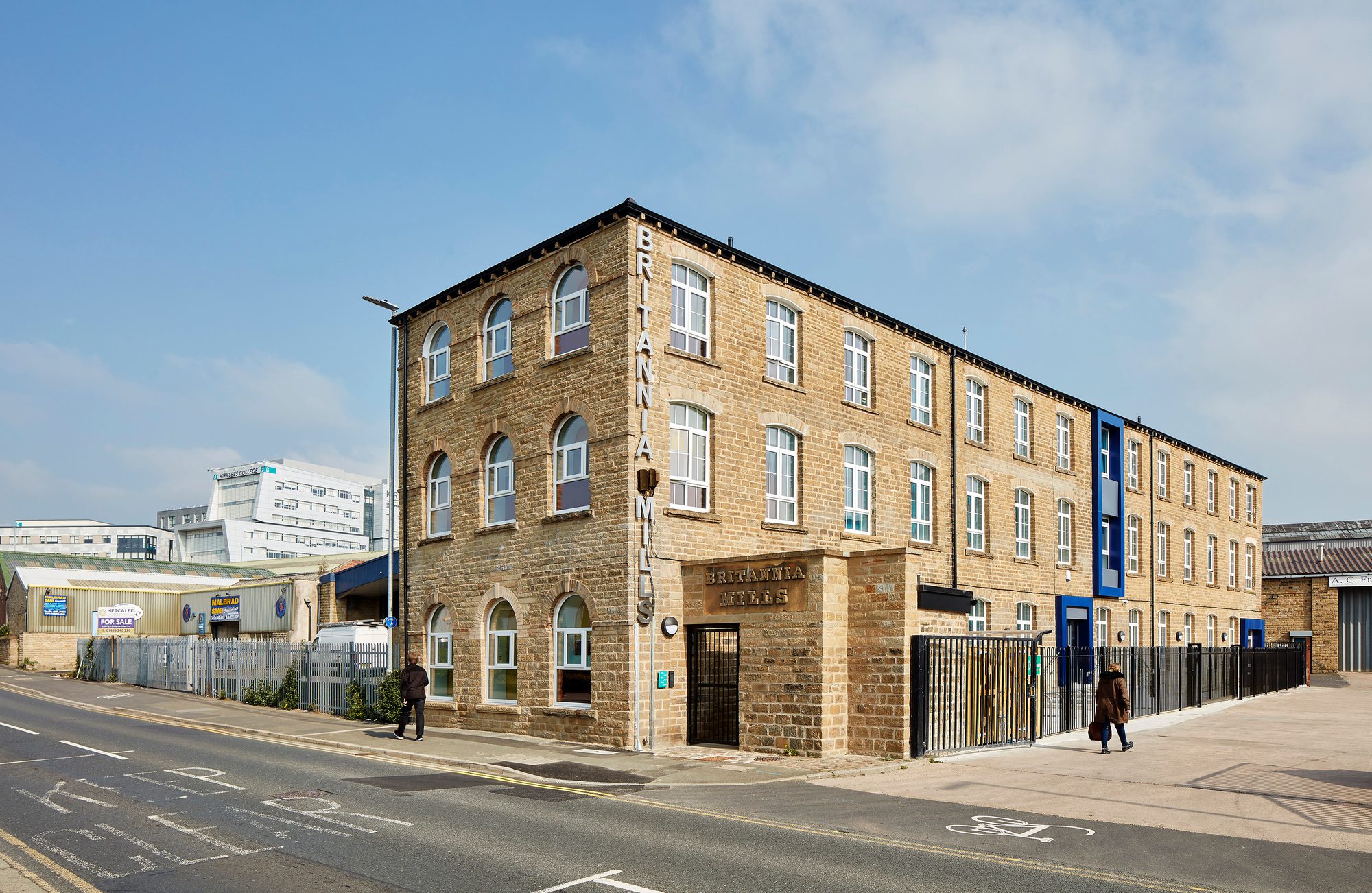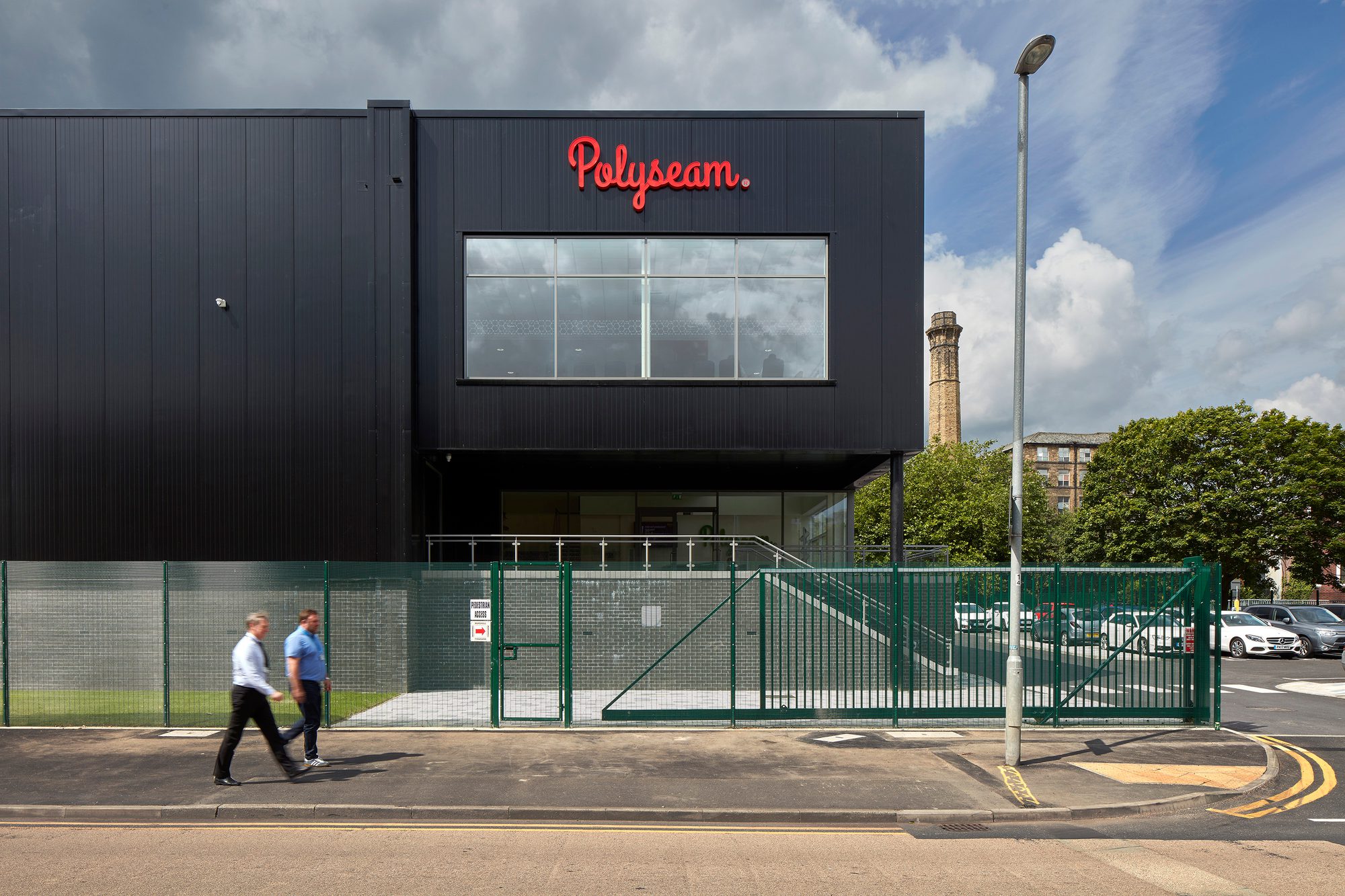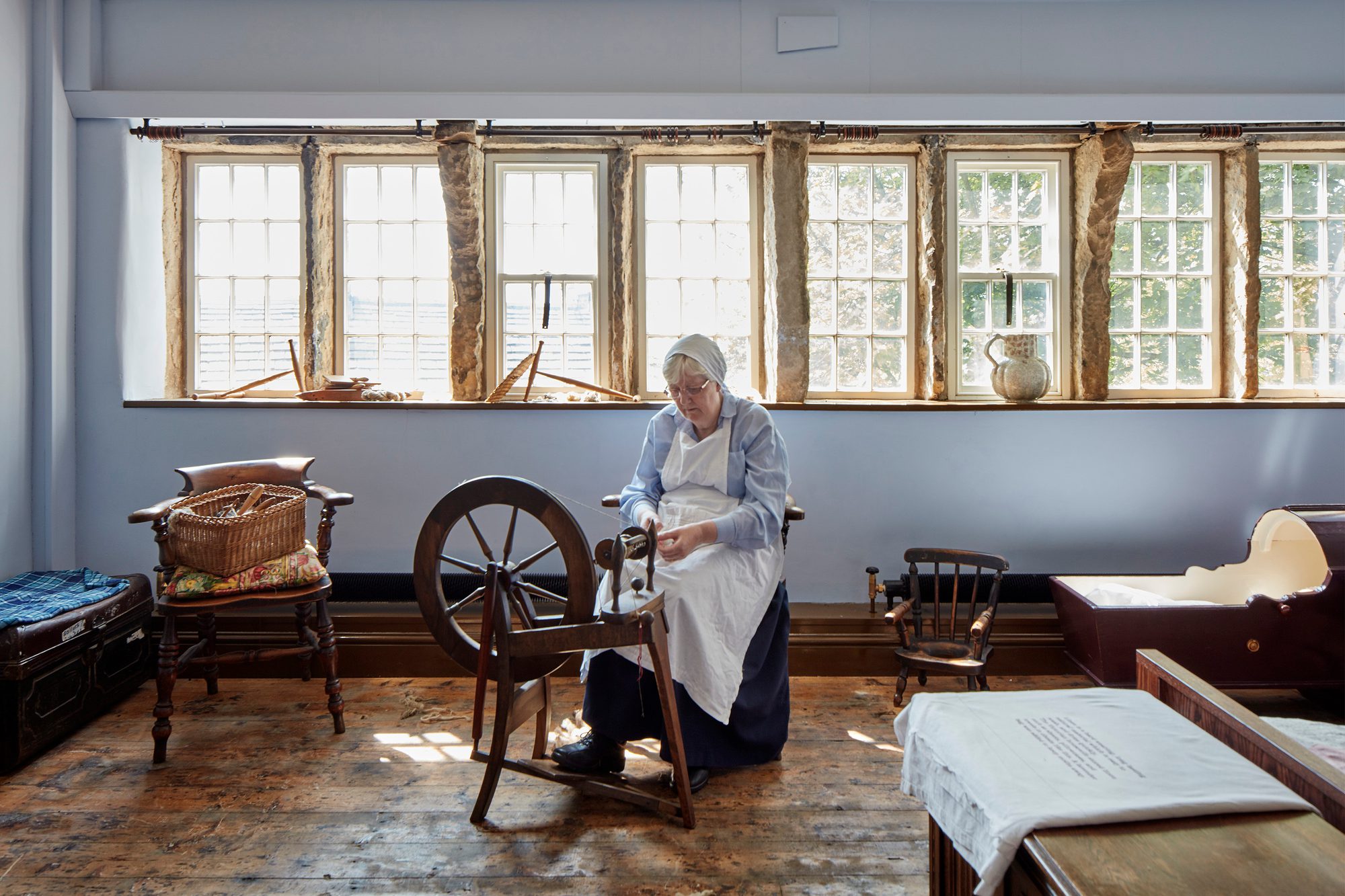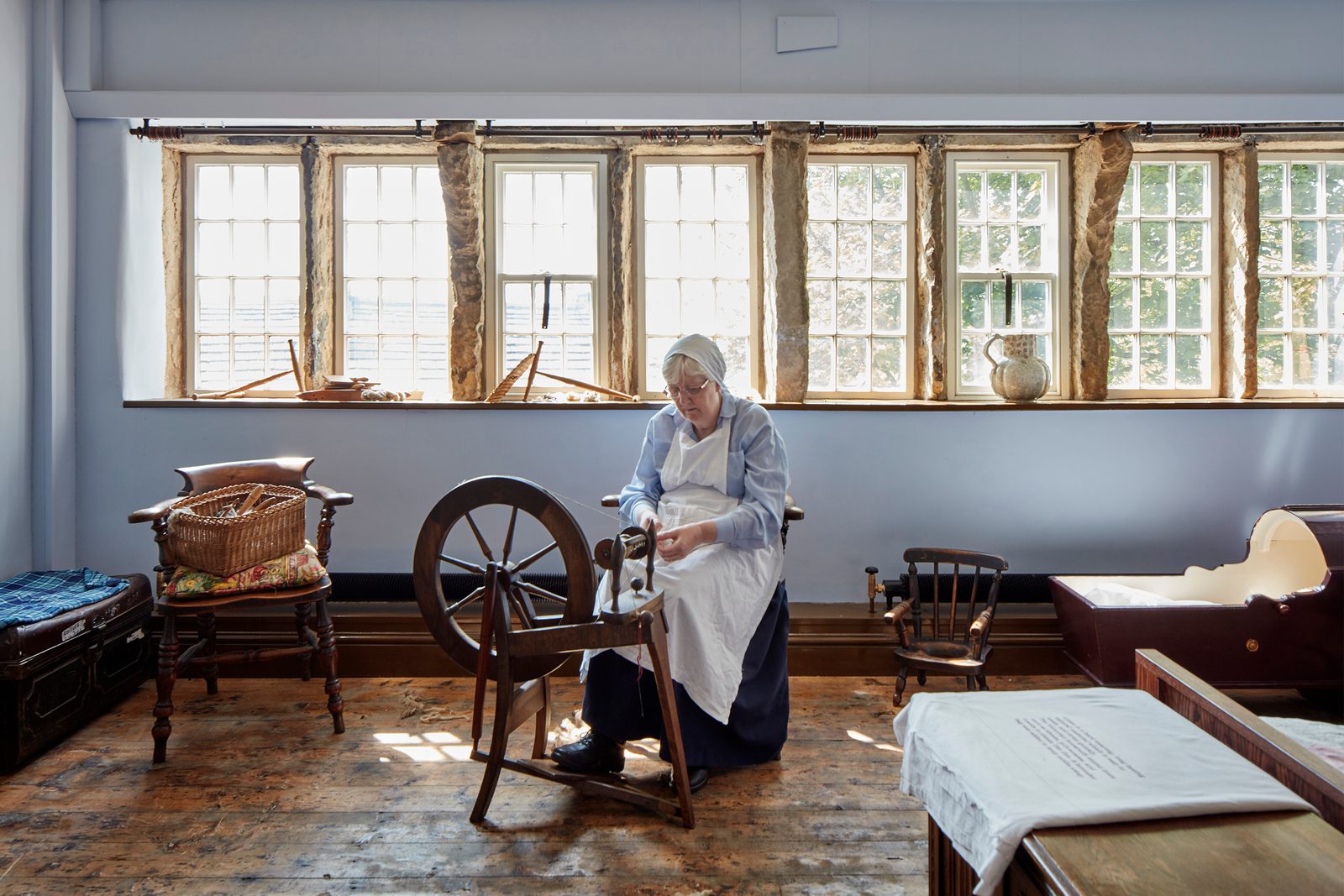
Thought Leadership
Supporting the town where our story began
by AHR
Abbey Hanson Rowe was founded in Huddersfield in the mid-19th Century. Today, as AHR, we continue to provide architecture and building consultancy services to support the development and conservation of the town where it all started.
Supporting the growth of a town for over 180 years
When Abbey Hanson Rowe (later AHR) was formed in Huddersfield in 1835, the market town was on the verge of an era of prosperity. Although the Ramsden family had shaped many aspects of the town’s development since 1531, cementing it as a key trading centre(1), it would be during the Victorian era in which Huddersfield would truly thrive.
Since the mid-19th Century, we have seen Huddersfield town centre change and adapt to meet modern demands and support an increasing population.
In more recent years, it has developed into a popular university town, with the University of Huddersfield acting as one of its largest employers(2) and owning many of its most striking assets.
We are proud to have had, and continue to have, some part in the creation, maintenance, conservation and development of many of Huddersfield’s best-loved and most eye-catching buildings, both new and old. Our longstanding framework appointments with Kirklees Council and the University of Huddersfield have shaped the way we have been able to support the town where it all began, conserving, remodelling and creating new to achieve modern ambitions and preserve its rich history.
This article will explore the history of the town and how, as architects and building consultants, we have helped to shape its character and support the community for almost two centuries, including several landmark buildings that those local enough will be certain to recognise.
How new transport links shaped the character of the town
Huddersfield had already seen growth in the latter part of the 18th Century, following the completion of the Broad Canal to Hull in 1774 and the Narrow Canal to Ashton in 1794. Once the canal system was developed to reach as far as Liverpool in 1811, Huddersfield’s woollen businesses flourished with new access to international markets. By the time the train station was opened in 1847, its industries rivalled some of the great textile centres of the North, such as Manchester and Bradford.(3)
Funded by the wealth generated by this newly thriving industry, many of the architecturally spectacular buildings that surround the train station in St George’s Square were built. Several of these are still some of Huddersfield’s best-loved and most striking assets, giving the town its character and making the town centre one of the best-preserved examples of a Victorian mill town.(3)
 Estate Buildings
Estate BuildingsThe ‘town that bought itself’
In 1888 the council was incorporated. Huddersfield remained part of the Ramsden Estate until the Council acquired it in 1920, becoming the ‘town that bought itself.’ Due to this, Kirklees Council still have significant holdings in the town today.(3)
Supporting their development ambitions and the conservation of the town, we have worked with Kirklees Council since 1971. Our appointment to provide full consultancy services under their framework agreement since 2001 has given us the opportunity to build on our already established relationship, enhancing efficiency and knowledge sharing through our long-term collaboration. It is through this commission that much of our work in the heart of Huddersfield has been procured, as we continue to build on our history with the town and help to support its economy through the use of local resources.
 Huddersfield Train Station
Huddersfield Train StationMaintaining essential transport links
The Council’s estate, perhaps rather unusually, includes Huddersfield Train Station.(10) The only Grade I listed railway station in Yorkshire,(3) it sits proudly at the head of St George’s Square. The square formed the central point of the new town, with the majority of its most grand and decorative buildings being built around the station in the mid to late 1800s to create a memorable entrance for its new rail visitors. The square sits in one of Huddersfield’s conservation areas and is home to some of the town’s 360 listed buildings.(3)
We have carried out a range of work at the station over the years, including the creation of a First-Class lounge and, prior to this, extensive internal refurbishment and remodelling works to improve the customer experience and the accessibility at the station.
Train travel remains an essential part of modern life, our stations continue to evolve with the times, transforming into contemporary transport hubs. More recently we have been acting as architectural subconsultants to ARUP as a design partner on the Transpennine Route Upgrade (TRU). The scheme involves the development of an extensive programme of upgrades across 25 stations, including Huddersfield.
Providing facilities for a thriving town
To provide suitable and convenient accommodation for the new influx of people arriving in Huddersfield via the new railway station, The George Hotel was opened in 1851. The now Grade II* listed building would later become the birthplace of rugby league in 1895 and, during the 1950s and 60s, play host to famous visitors such as Audrey Hepburn.(4)
Despite closing its doors in January 2013 and sitting vacant for several years, in March 2020 Kirklees Council purchased the building and are carrying out refurbishment and restoration works to bring the building back to life. We were appointed to the second phase of this conservation project, which supports the further development of the historic building into a Radisson RED hotel, due to complete towards the end of 2024.
The Estate Buildings sit on the opposite side of the square to the hotel and were opened in 1874. Originally used as the estates’ office for the Ramsden family, the building had remained unoccupied since 2002.
In 2013, we undertook a project convert the disused offices on the west side of the building into affordable residential flats under Kirklees Council’s ‘Empty Clusters’ scheme, which also included the conversion of a former 1886 temperance hotel, Waverley Chambers (Grade II listed) into six one-bedroom flats.
A historic but empty building has been brought back to life, while the physical improvements and the way the flats are being let make this a very desirable place to live. I hope all the residents will be very happy in their new homes.”
Councillor Cathy Scott
Kirklees Council’s cabinet member (responsible for housing)Conserving the original Ramsden Estate
Ten years on, we are currently acting as Lead Designer, and in an advisory role as Conservation Architect, to provide a programme of external fabric repairs to preserve and protect the Grade II* listed Estate Buildings, restoring them back to their former glory.
At some of Huddersfield’s other historic buildings, our present involvement in their conservation sees us returning to preserve work initially connected to the firm during the 19th Century.
For instance, Huddersfield Town Hall was built in two sections, the lower part (to Ramsden Street) and, the higher part (to Princess Street) 1878 -81. The latter was originally designed by architect John H Abbey(11) of Abbey Hanson Rowe (now AHR). Almost 150 years later, we are currently carrying out essential repair works at the Grade II listed building to support its conservation.
We are also currently supporting Kirklees Council with restoration works at another asset from the original Ramsden Estate, the Byram Arcade, as well as remodelling, redevelopment and enhancement works to one of the town’s more modern 1960’s high-rise tower blocks, Buxton House.
These recent projects all form part of the council’s wider plans for the redevelopment and regeneration of the town under their 10 year vision entitled the Huddersfield Blueprint. It hopes to see the town transform into a modern hub, creating the same draw that those arriving via the new station in the 19th Century felt.
Relevant experience
Legacy of a town
A monument for Queen Victoria’s Jubilee
The Ramsden family were not only responsible for the development of the centre of Huddersfield but later the town’s most recognisable landmark, ‘Castle Hill’ Tower. First referred to as Queen Victoria’s Silver Jubilee Tower and later shortened to Victoria Tower, it was completed in 1898 and built as a memorial to commemorate the monarch’s milestone.(6)
Standing proudly atop Castle Hill two miles out of town in Almondbury, the tower is not only a prominent feature of the landscape but also plays a significant role in AHR’s history. Then called Abbey & Hanson, we were appointed as Supervising Surveyors for the project, even attending the ceremony to mark the laying of the foundation stone by Mr J. Frecheville Ramsden, son of Sir John Ramsden (Lord of the Manor) in 1897. (7)
The tower was formally opened to visitors by the Earl of Scarborough in June of 1899.
Today Castle Hill is a part of scheduled ancient monument, with the tower itself being designated a Grade II listed status in 1978. The scheduled monument also comprises the remains of a late-Bronze Age univallate hillfort and a 12th Century motte-and-bailey castle.
Such is the importance of the tower to the town, it still features in the logos of both Huddersfield Town Football Club and the town’s local newspaper, The Examiner.
I know of nothing that has been built in this district that has had such an elevating tendency as the erecting of the Victoria Tower. Go where you will you are involuntarily drawn towards it. Without obtrusion it insists upon being seen. You feel it almost your duty to look for it, indoors or out.”
A correspondent from The Chronicle. known by only the pseudonym Cid
Noted in an article titled ‘Towards and from the Tower’ Oastler Building
Oastler BuildingShaping a campus with the new and the old
We have supported the University of Huddersfield in maintaining and developing their campus through the delivery of our full consultancy service for many years. We have carried out a significant number of projects including a wide range of services, both working to preserve their existing buildings and create new facilities in line with campus improvement and expansion plans.
The University of Huddersfield was officially formed in 1992 but has origins as an institution since the 19th Century, with a history that dates back to 1841.(8)
As you might have now come to expect, the Ramsden family have ties here too. In 1825, Sir John Ramsden was part of an attempt to set up a Scientific and Mechanics Institution in Huddersfield, to which he would later become Patron. Several reincarnations and decades later, in 1970 the College of Technology, as it eventually came to be known, merged with the Oastler College of Education to form Huddersfield Polytechnic, before later becoming the university. (8)
In 2014, it would be one of the former colleges that would inspire the name of one of our most innovative projects to date with the university, The Oastler Building; a quintessentially Huddersfield project in which we firmly committed to using only local suppliers, materials and workforces to achieve.
Embracing the ever-evolving nature of the campus, Oastler celebrates education, through flexible spaces that are completely adaptable.
In stark contrast to the historic buildings at St George’s Square that welcome visitors arriving by train, this landmark, modern asset sits alongside the main ring road (completed in the 1970s), welcoming those arriving by one of the main routes into the town by car.
Protecting the campus’ historical assets
Not all the University’s buildings are this modern though. The institution also owns its fair share of Huddersfield’s most historical assets, some of which we also have a greater history with.
For example, The Sovereign Design House was originally developed by AHR (then operating as Abbey Hanson Rowe) in 1955. The purpose-built washing facilities for workers at the then-adjacent Broadbent Foundry were designated a Grade II listing status in 2009.
Purchased by the University as part of their campus expansion plans, our geomatic consultancy carried out a range of surveys at the site in 2015, which would ultimately inform our project in 2018 in which were appointed to design the conversion of the building into an exhibition and gallery space for students’ work, alongside café facilities.
In the former mill district of the town at The Larchfield Building, our 2012 scheme supported the conversion of the two-story building into the university’s Enterprise and Innovation Centre, whilst our project at The Joseph Priestley Building, home to the School of Applied Sciences, saw the sustainable refurbishment of the complex 1960s building in 2018.
With its roots in the town several decades before the arrival of the main square in the mid-19th Century, the Sir John Ramsden Building was built around 1776 and is thought to be one of the oldest surviving warehouses of its type in Britain. Named after the now infamous Lord of the Manor, it stands alongside the canal and is today owned by the university. Our teams were appointed to support a scheme to convert the Grade II listed building from residential flats into modern offices for their various departments.
relevant experience
A university town
Incorporating modern technology
Juxtaposing some of the campus’ historic buildings, the UK Rail Research and Innovation Network (UKRRIN), Centre of Excellence in Rolling Stock (CoERS) is part of a £92m government research council and industry co-funded initiative hosted across three universities, including the University of Huddersfield’s Institute of Railway Research.
While it boasts some of the most advanced technology available in rail research, and is hailed as a world-class facility, the centre is housed in an original 1960s buildings. This presented us with some limitations when it came to us leading the procurement and engineering design for the rigs, considering the complexities of lead times and design constraints.
In another scheme to create The Barbara Hepworth Building on the campus, we procured local materials and services, in turn making a significant contribution to the local economy and generating £8.6m in social value.
As the university continues to develop its already expansive campus and firmly sustain Huddersfield as an important university town, one of our latest projects, and the largest yet, is setting the standard for healthcare in education. The Daphne Steele Building will deliver an outstanding learning environment for students, with cutting-edge health education and research. Set to add another striking modern building to Huddersfield’s skyline on the site of a former sports and leisure centre, the building will incorporate a colour palette inspired by the local landscape of the town and university’s identity.
Supporting local communities with modern facilities
At the opposing end of the town to the original 19th Century Ramsden buildings, Huddersfield Leisure Centre sits prominently on the main ring road. The high specification facility provides a range of specialist fitness and activity spaces, including a 25-metre national short course competition pool, a trainer/studio pool with a movable floor, and a leisure pool with interactive water features, water flume and sidewinder.
A new-comer to the town, relative to the town’s history, the centre has proved popular with its residents, winning the Huddersfield Examiner’s Readers’ Award in 2016 just nine months after it opened.(9)
We have also worked with John Smith’s Stadium (formerly Galpharm Stadium) on schemes to deliver geomatic consultancy services to the main stadium as well as on a separate scheme to complete extensive refurbishment works to another of Kirklees Active Leisure’s gyms, which is housed on the site.
It’s great to see new customers, who have never visited a leisure facility before, coming in to see what we can offer to improve their health and wellbeing.
The open layout and top-quality facilities are certainly encouraging people to come in to visit and to then become that bit more active, which is great.”
Hazel Francis
General Manager, Kirklees Active Leisure
Supporting the local businesses
At Colne Valley Museum in Golcar, a few miles out of the town centre, we carried out sensitive refurbishment works. Here visitors can see first-hand the workings of the Grade II listed weavers’ cottages from the 1840s. Beginning with humble domestic spinning and weaving during the 1700s, it would be this trade that would pave the way for Huddersfield’s booming wool industry in the years to come.
Close to the town centre, at another Grade II listed building, a Victorian mansion from 1860 now known as Tolson Museum, we carried out a number of surveys designed to protect the historic building, as well as to inform future expansion plans. Built by cloth manufacturer, John Beaumont, his former home also has strong links to Huddersfield’s successful wool industry.
When a 1860s former industrial mill was sold to First4Lawyers in 2017, we were appointed as the design team, providing a range of building and geomatic consultancy services for its conversation into student accommodation, supporting the growth of the towns student population. The building, known as Britannia Mills, had previously been used offices for Kirklees Council.
Our project at Polyseam Manufacturing Unit supported the local company to remain in the town they had manufactured in for 23 years previously, providing a new purpose-built development on an existing car park. The 82,000ft2 of new floor space also enabled the business to expand their manufacturing lines, in turn increasing their staff members from 39 to over 100.
In 2003, we completed the design and contract management of a new 6,500m2 church and community centre for Huddersfield Christian Fellowship. The landmark building, named Cathedral House, was the largest new church built in Britain for 20 years and has a 2,100-capacity auditorium. In 2009, the church won the Community Projects category at the West Yorkshire LABC Building Excellence Awards.
Continuing to support an ever-evolving town
As towns and cities across the country continue to adapt to modern life and the new challenges it presents, such as hybrid working and evolving shopping habits – as technology draws us away from the traditional high-street – we proudly continue to support the town where it all began in 1835.
In line with the plans to achieve the Huddersfield Blueprint, we look forward to continuing to support Kirklees Council, the University of Huddersfield, and other local businesses, by contributing to the modernisation and conservation of a town, as rich in history as it is in potential.
We’re looking forward to seeing how Huddersfield town continues to develop in the coming months and years and we’re proud to contribute to its enhancement. To discover more of our work across a range of sectors, visit our extensive project portfolio here.
References
- https://thetownthat.uk/exhibition/the-ramsdens/
- https://staff.hud.ac.uk/campuslife/workingattheuniversity/#:~:text=The%20University%20of%20Huddersfield%20is,administrative%2C%20technical%20and%20support%20staff.
- http://urbed.coop/sites/default/files/Huddersfield%20Report%20-%201%20Understanding.pdf
- https://oursquare.huddersfieldhistory.org.uk/the-george-hotel-a-great-past-and-a-glorious-future/
- https://huddersfield.exposed/wiki/Lion_Arcade,_John_William_Street,_Huddersfield
- https://www.examinerlive.co.uk/news/west-yorkshire-news/historic-huddersfield-building-firm-aedas-4992610
- https://www.archiseek.com/2014/1898-castle-hill-tower-huddersfield-yorkshire/#.VHW8rukqWM8
- https://en.wikipedia.org/wiki/University_of_Huddersfield
- https://www.examinerlive.co.uk/news/west-yorkshire-news/examiner-readers-regard-huddersfield-leisure-10976369
- https://www.examinerlive.co.uk/news/west-yorkshire-news/new-platform-9-plan-huddersfield-4940134
Share on
Related Projects

The George Hotel
Our sensitive approach to preserving the heritage of one of Huddersfield’s most historically and culturally important buildings; bringing it back to life with essential fabric repairs.

Huddersfield Train Station
To improve access for passengers, enhance the customer experience and provide better office and welfare facilities, we were appointed to manage the refurbishment of the historic station.

Sovereign Design House
Converting a Grade II-listed building to create exhibition and gallery space

